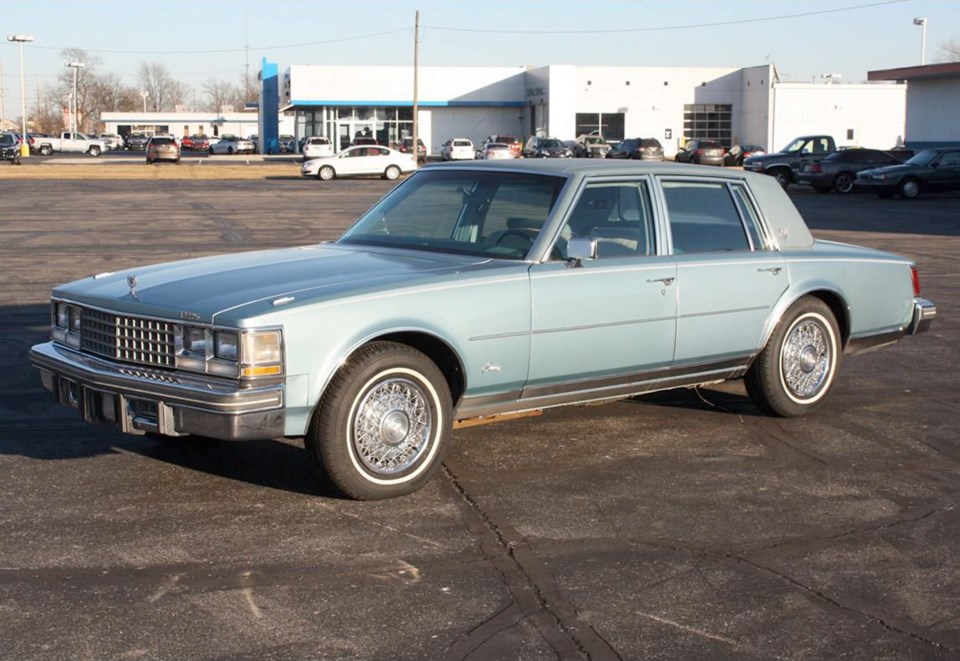During the 1970s, the North American automotive scene underwent some fundamental changes. Two oil embargoes and increasing environmental concerns brought tightening fuel-economy legislation and emission standards. Subcompact cars came from Detroit, and sales of small cars from Japan and Europe increased significantly.
Even more worrisome was the encroachment of foreign cars such as Mercedes-Benz, BMW and Jaguar into the high-profit luxury segment, the traditional preserve of Cadillac, Lincoln and Chrysler.
Cadillac, long advertising itself as “The Standard of the World,” had been the Americas luxury market leader for decades. This was the first time in many years it had been seriously challenged, and contrary to American thinking, foreign manufacturers were proving that luxury and prestige need not be linked to gargantuan size.
It was a revelation that prompted Cadillac to respond in kind with a smaller luxury car.
After considerable planning and discussion the corporate compact unit-construction Chevrolet Nova, Pontiac Ventura, et al. X-car platform was chosen as the base. It was big enough to provide a spacious package without being too large.
Cadillac began designing it new “international size” car around the X-car with the goal of retaining all the traditional Cadillac qualities of luxury and exclusiveness in a smaller package.
The X-car wheelbase was stretched 76.2 millimetres to 2,896 mm. Overall length increased 178 mm to 5,182 mm. This was still 678 mm shorter than the standard Cadillac, the smallest Cadillac product since the last LaSalle in 1940.
The use of off-the-shelf components allowed completion of the project in a remarkably short 18 months, and when they were finished, its humble X-car roots were well camouflaged. The Seville, as it was called, came as a four-door sedan only and arrived in the spring of 1975 as an early 1976 model.
Although small by Cadillac standards, it was almost exactly the same size as the Mercedes-Benz 450SE, a large car by European standards and Cadillac’s principal target. The Seville’s 1,971-kilogram weight was 111 kg greater than the 450SE’s.
The Seville used the X-car’s coil spring and A-arm front suspension carried in a separate sub-frame secured by soft “Isoflex” mounts. Harshness was further reduced by rubber bushings between the top spring mounts and the body.
Extra absorbing material and bracing struts were added, and the leaf springs carrying the beam rear axle had Teflon inserts between the leaves. Brakes were disc front and drum rear, and it had a steering damper.
Cadillac’s 8.2-litre (500 cu. in.) engine was considered too big, so Oldsmobile’s 5.7-litre (350 cu. in.) overhead valve V-8 was fitted, with Bendix electronic fuel injection replacing Oldsmobile’s carburetor. It was America’s first electronic injection, and gave the Seville better drivability than carburetion while increasing horsepower to 180 from the Oldsmobile’s 170.
The styling of this “international size” Cadillac was tightly drawn and taut in appearance. A Rolls-Royce influenced formal roof profile and nearly vertical rear window gave enhanced visibility and additional head room, beginning an American car design trend.
The Seville arrived with Cadillac’s traditional egg-crate grille, changed to a vertical-bar design for 1977. The overall styling was clean and distinctive without excessive chrome trim. Circular wheel cutouts added to the elegance.
So there would be no doubt that Cadillac was serious, it made the Seville its highest-priced model at $15,000 US. Not surprisingly, it came with extensive standard equipment, including power steering, brakes, windows, seats and door locks. It also had tilt and telescoping steering wheel, temperature-control air conditioning, AM/FM stereo radio, leather upholstery, standard (American exclusive) load levelling and an automatic transmission.
The Seville’s 2.56:1 rear axle ratio (with 3.08:1 optional) was geared more for quietness and fuel economy than performance. Road & Track recorded a so-so zero to 100 km/h in 13.3 seconds and top speed of 175 km/h.
The Mercedes-Benz 450SE with a 1.2-litre smaller 4.5-litre engine sprinted to 100 in 10.6 seconds and reached 204 km/h. It was also priced almost twice as high.
The first generation of this smaller Cadillac produced from model years 1976 to 1979 sold consistently well. Production was 60,127 1976s (a long production run), 45,060 ’77s, 76,985 ’78s and 53,487 ’79s. For 1980, the Seville was switched to front-wheel drive and received new European-influenced “bustle back” styling.
General Motors had proved for itself what the imports had already demonstrated: buyers would accept their traditional luxury and coddling in a smaller package. It was a welcome relief for a corporation that was in the midst of a huge gamble, the introduction of its bread-and-butter, standard full-size Chevrolets, Pontiacs, et al. in downsized form for 1977.



